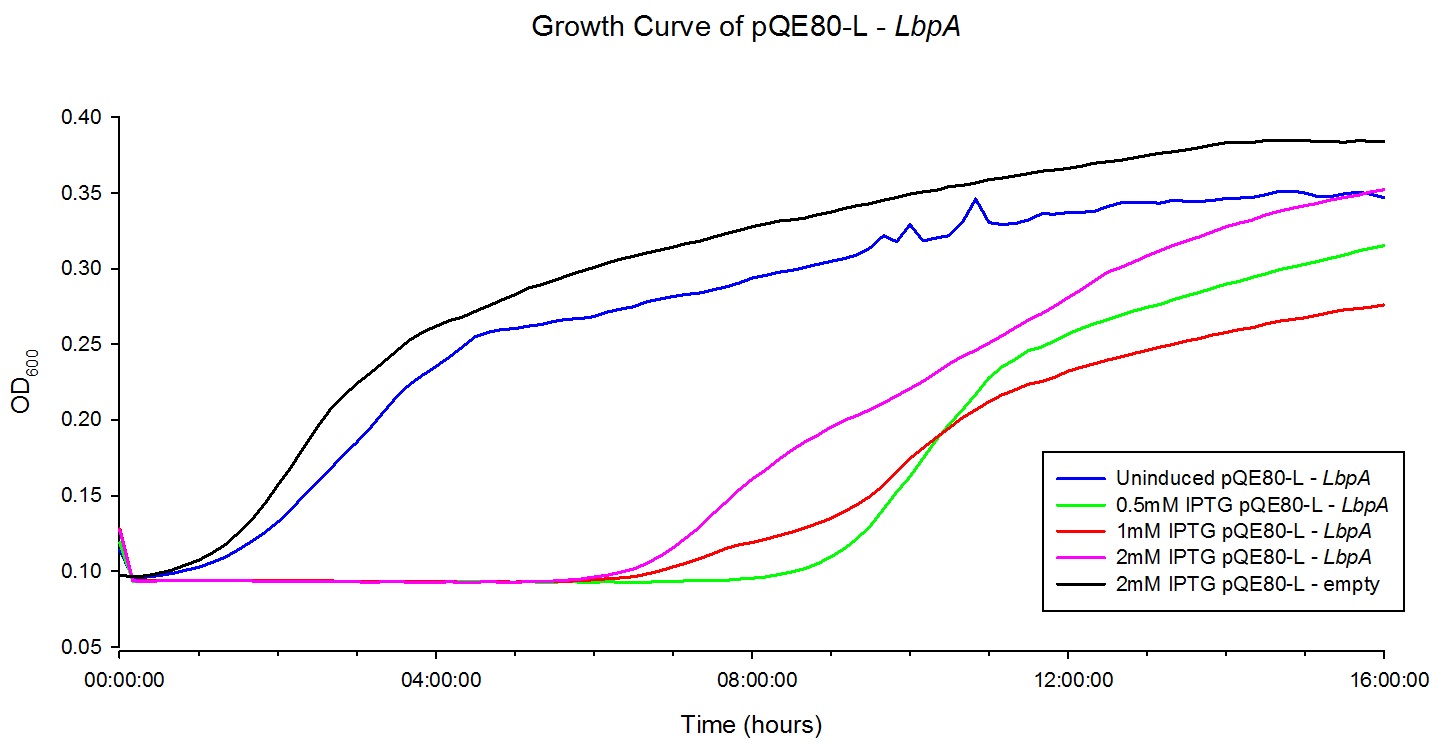Part:BBa_K1590008
Lactoferrin Binding Protein
Coding sequence for Lactoferrin Binding Protein of Neisseria meningitidis. This protein sequesters iron for the host from Lactoferrin.
Sequence and Features
- 10COMPATIBLE WITH RFC[10]
- 12COMPATIBLE WITH RFC[12]
- 21COMPATIBLE WITH RFC[21]
- 23COMPATIBLE WITH RFC[23]
- 25INCOMPATIBLE WITH RFC[25]Illegal AgeI site found at 172
- 1000COMPATIBLE WITH RFC[1000]
Usage and Biology
A major component found in saliva is a free iron sequestering compound known as lactoferrin, a protein involved in the innate immune system. Neisseria meningitidis is a gram-negative bacterium with an iron-binding outer membrane protein called lactoferrin binding protein A (LbpA). N. meningitidis uses this LbpA to extract iron from the host lactoferrin under pathogenic conditions to allow for the bacterium to perform essential cellular metabolism such as energy generation and DNA replication.
In order to do this chromosomal DNA from Neisseria meningitidis MC58 strain was kindly gifted to us by Dr James Moir from The University of York. This was used as a template for the amplification of the lbpA gene into the pSB1C3 plasmid and then subcloned into the high expression plasmid pQE80-L.</p>
The pQE80-L – lbpA plasmid was then transformed into M15 pREP4 to allow for more tightly controlled protein expression. E. coli cultures harbouring pQE80-L encoding LbpA were subcultured and grown to an OD600 = 0.6 before being induced with 1mM IPTG. Following 6 hours induction the cells appeared to die as shown in Figure 1.

Figure 1 - LbpA Culture Samples.</b>Lane 1: Sample from uninduced culture. Lane 2: Sample from culture induced with 1 mM IPTG. On comparison of the two cultures, it seems that inducing expression of LbpA causes the cells to die given the significant reduction of protein levels visible on the gel.
In order to investigate this further, we performed plate reader experiments where different concentrations of IPTG were used to induce LbpA expression. The cells were also given a longer period of time to grow. Although cells started to grow again ~7 hours after induction, this was determined to be due to the emergence of mutants.
Figure 2 - Growth Curve of Uninduced and Induced Cultures (0.5 mM, 1 mM and 2 mM IPTG)</b>The graph shows that on comparison with the uninduced control, the induced cultures stop growing when LbpA expression is induced. After ~7 hours, it is possible that the emergence of mutants causes the the OD to rise again or the cells have adapted to the production of the foreign protein.
Despite this, we did try to grow large cultures of M15 E. coli containing pQE80-L-LbpA¬, to see if we could detect any expression. We attempted this under a number of different growing conditions, however, none of these were successful. It is suspected that LbpA forms inclusion bodies and therefore insoluble which makes it difficult to purify.
Functional Parameters
| None |

